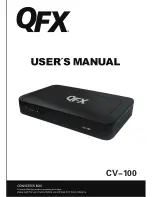
— 71 —
RT+ TAGS
Each Radio Text Plus entry allows two RT+ tags to delineate the
RT text. Each of these two tags consists of three ‘information
elements’:
1)
The RT ‘Content Type’ from a list of 64 possibilities;
2)
The ‘Start Marker’ that points to the position of the first
character of the ‘information element’;
3)
The ‘Length Marker’ giving the number of characters
follow-
ing
the Start Marker character, used to define the length of
the ‘information element.’
The arrangement of RT+ data is diagrammed in the illustration
below, which is part of the RT+ Standard:
Neglecting ‘housekeeping’ commands for the present, Content
Type is defined by a list that is part of the RT+ Specification.
This list is shown in the Appendix on Page 82. For the everyday
example that we will illustrate below, refer to Page 82 and note
that a Content Type is specified for
ITEM.TITLE
and
ITEM.ARTIST
.
The song title and artist tags are sent in succession as six indi-
vidual, two-digit numerical values.
An RT+
Tag Example
Here’s an everyday example of the Radio Text field showing
this song data:
First will be an explanation of how the tag is calculated numeri-
cally, followed by use of the Windows® software utility to per-
form the same operation.
The two pieces of information we want to tag are the song title
and artist. The first tag, for the title, is composed of three, two-
digit values. First the Content Type, which is
ITEM.TITLE
from
the list on Page 82. It’s the first category so it carries a numeri-
cal value of 01. Next comes the Start Marker, the position of
the first letter in the title name. Begin counting characters and
spaces with the number zero for the first character showing in
the RadioText field. With the
N
in
NOW
as zero, the Start
Marker would be
E
in
EYE
, position 13. The song title has an
additional 15 characters and spaces
after
the initial
E
, so the
Length Market is 15. Our first tag thus has numerical values of
01, 13 and 15.













































